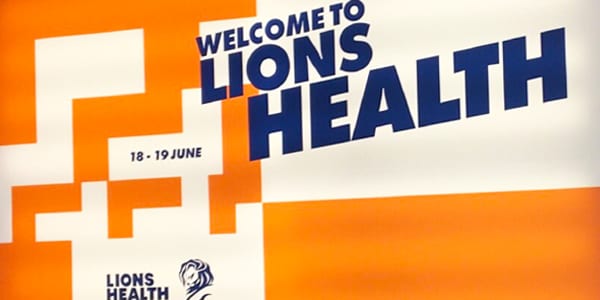The Cannes International Festival of Creativity is a week-long explosion of creativity, technology and sound, showcasing innovative work in advertising, marketing and communications. The first two days of the festival focus on latest trends in pharma, health and wellness. It attracts everyone from the brightest minds in biotech, to the creatives and C-suite leading the charge to uncover new and disruptive ways to evolve the industry and develop life-changing outcomes for patients and consumers.
Three trends emerged for me personally after a two-day boot camp through the inspiring world of Health Lions. Here they are:

Humanized chatbots grow in popularity:
Start-up company, ConversationHealth, develops chatbots for large pharmaceutical brands. They believe millennials are more comfortable chatting with bots about health issues than live healthcare providers. AI uses sophisticated algorithms to interpret patient questions and provide regulatory-approved responses. Several big pharma brands are employing chatbots to connect with their patients on topics ranging from basic prescription questions to very personalized questions about some of the most stigmatized health issues we’re facing today.
Unexpected creative, and the power of celebrity, can tip the scales:
Perhaps the most compelling work featured during Health Lions was Malaria Must Die, which had little money but a bold idea when it approached world-renowned soccer star David Beckham to appear in a launch video trapped inside a glass case with 10,000 mosquitoes to raise awareness about the disease. Needless to say, but a star alone does not make for compelling creative.
Legacy brands must embrace skepticism and adapt to survive:
One cautionary, yet redemptive, tale from Health Lions was the work of a baby care products brand that enjoyed marketplace leadership for decades, until the 2000s, when modern parents and caregivers wanted something different. The company first defended itself by openly explaining all of its ingredients to its employees and the scientific community. It believed in its formulas and their safety, but that was not the level of transparency consumers were looking for. After listening to 26,000 consumers around the globe, questioning the company’s “sacred cows,” and using its most important brand value – gentle – as a lens for all decision-making, this legacy brand has redesigned its baby product line. It embraced the skepticism and adapted accordingly. In August 2018, it will relaunch its baby care products with half the ingredients, clear labels and no dyes or artificial fragrances.
Transparency is now table stakes, and communicators need to take notice.


